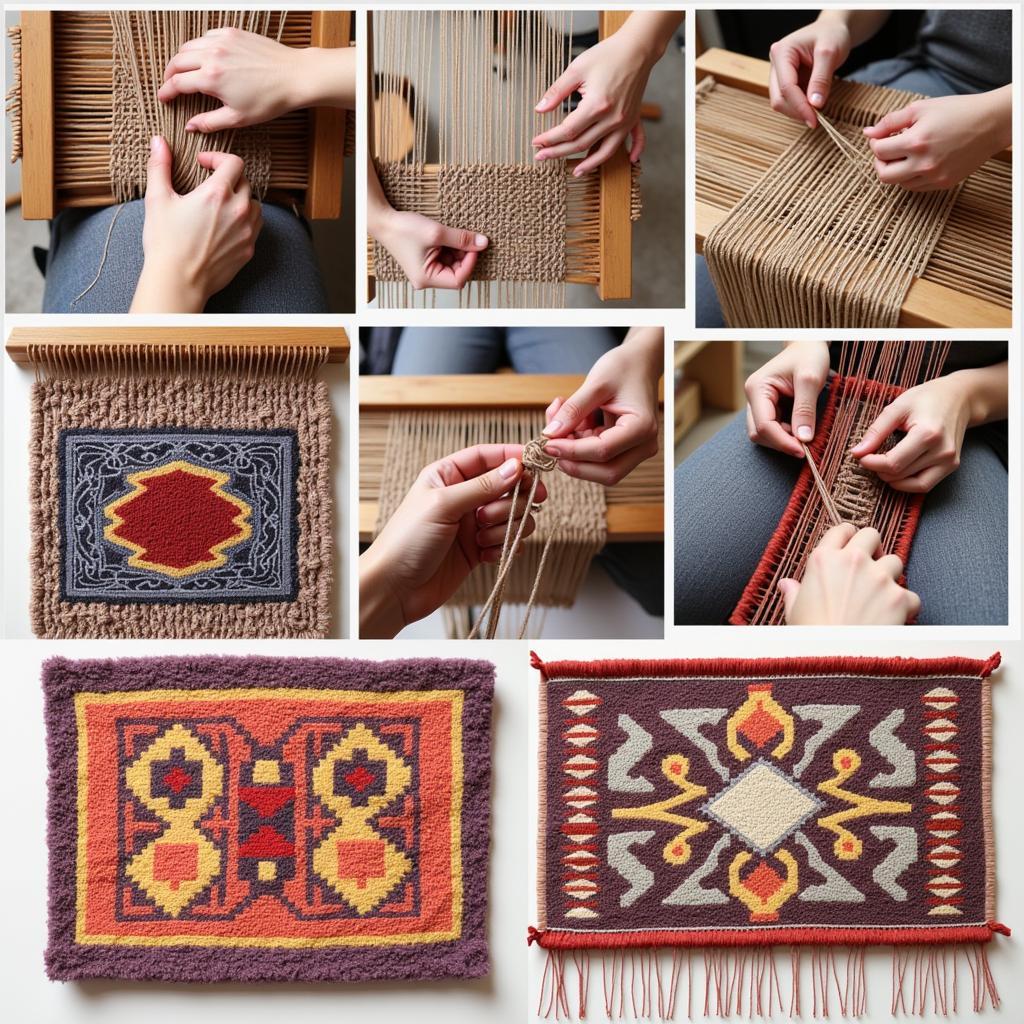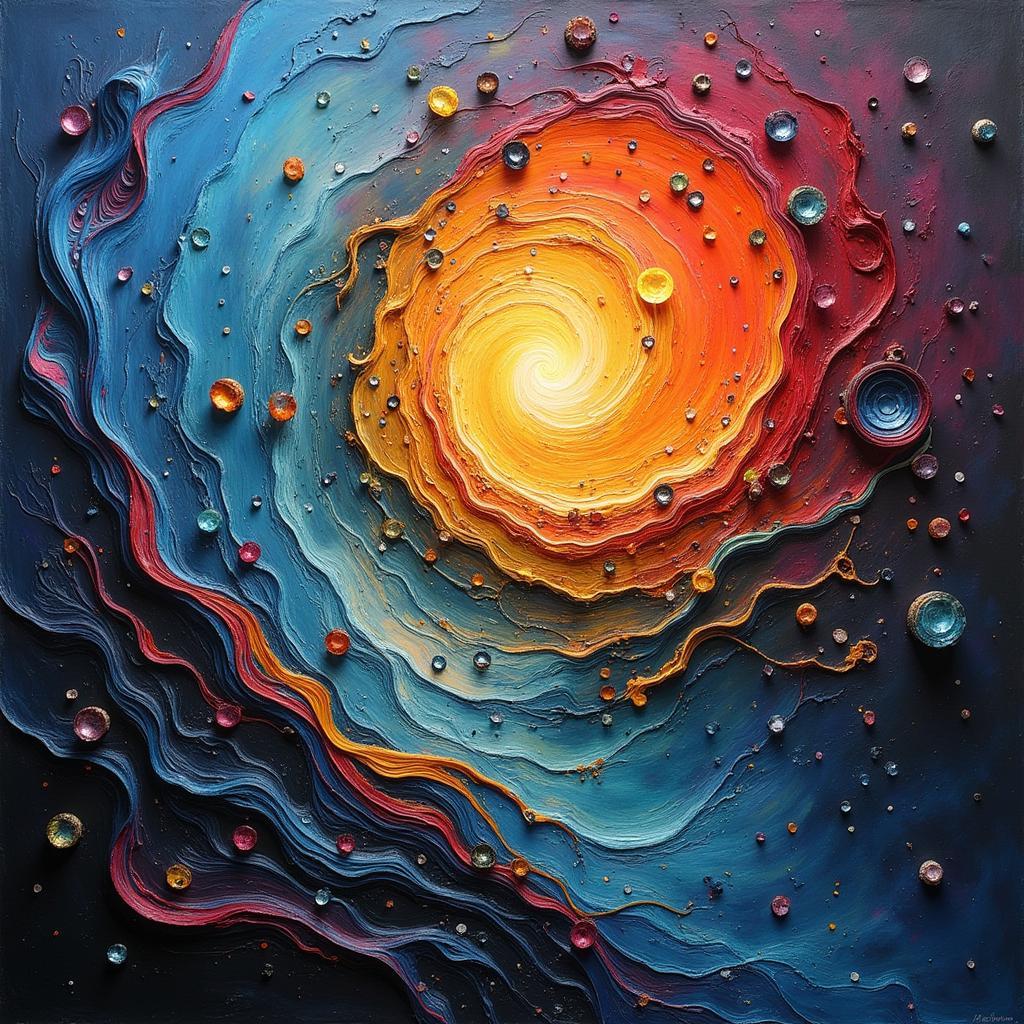Japanese Art Toys: A Journey into Kawaii Culture and Creative Expression
Japanese Art Toys, also known as “sofubi” or “kaiju” figures, are a fascinating intersection of art, culture, and design that has captivated collectors and enthusiasts worldwide. These whimsical, often brightly colored figures are more than just toys; they represent a vibrant subculture of Japanese creativity and a unique blend of traditional and modern aesthetics.
Unveiling the World of Japanese Art Toys: A Cultural Tapestry
Japanese art toys are a testament to the country’s rich artistic heritage and its embrace of the playful and imaginative. They embody a spirit of “kawaii” (cuteness) and “kaiju” (monsters) that permeates Japanese popular culture.
The Origins of Japanese Art Toys: A Fusion of Art and Play
The history of Japanese art toys can be traced back to the 1950s, when toy makers started experimenting with new materials and techniques. Sofubi, a soft vinyl material, became the medium of choice for creating durable and expressive figures. Early art toys were often inspired by traditional Japanese folklore and mythology, featuring characters like Tengu (mountain goblins) and Oni (demons).
The Evolution of Japanese Art Toys: From Traditional to Contemporary
Over the years, Japanese art toys have evolved significantly, embracing contemporary influences and artistic styles. Artists and designers began to incorporate pop culture references, anime characters, and even abstract concepts into their creations. This evolution has led to a diverse array of art toys that cater to a wide range of tastes and interests.
The Power of Japanese Art Toys: More Than Just Toys
Japanese art toys are not just for children; they hold a deep cultural significance and a powerful appeal for adults as well. They serve as a medium for self-expression, a source of inspiration, and a symbol of a unique artistic movement. Collectors around the world are drawn to the intricate details, the vibrant colors, and the stories that each figure tells.
Exploring the Art of Japanese Art Toy Creation: A Blend of Tradition and Innovation
The creation of Japanese art toys is a meticulous process that involves both traditional and modern techniques. From sculpting and molding to painting and finishing, each step requires skill and artistry.
The Sculptural Foundation: Shaping the Vision
The journey begins with a sculptor creating a detailed model of the figure. This model can be made from clay, wax, or even digital software. The sculptor captures the essence of the character or concept, paying close attention to the proportions, the expression, and the overall aesthetic.
Molding Magic: Replicating the Design
Once the sculpt is complete, it is used to create a mold. Traditionally, molds were made from rubber or plaster, but modern techniques utilize silicone and 3D printing. The mold is a negative image of the sculpt, allowing for the production of multiple identical figures.
Casting the Future: Bringing the Figure to Life
The mold is then used to cast the figures. Sofubi, the soft vinyl material, is poured into the mold and allowed to cure. This process gives the figures their signature durability and flexibility.
Painting Perfection: Adding the Finishing Touches
After the figures have been cast, they are carefully painted and finished. Artists use acrylic paints, spray paint, and other techniques to create vibrant and detailed colors. Some artists also add custom details, such as weathering effects, metallic accents, and even glitter.
The World of Japanese Art Toy Artists: Master Craftsmen and Creative Visionaries
The world of Japanese art toys is filled with talented artists and designers who bring their unique visions to life. These individuals are masters of their craft, blending traditional techniques with modern sensibilities.
Meet the Artists: A Glimpse into the Creative Minds
“As a Japanese art toy designer, my goal is to create figures that evoke a sense of wonder and nostalgia,” explains Hiroko Sato, a renowned artist known for her whimsical and detailed figures.
“I find inspiration in the everyday things around me, from nature to pop culture,” shares Takashi Tanaka, an artist whose work reflects his fascination with urban landscapes and everyday objects.
Collecting Japanese Art Toys: A Passion for the Extraordinary
Collecting Japanese art toys is more than just acquiring figurines; it’s a passion for embracing the unique and the extraordinary. Collectors appreciate the artistry, the cultural significance, and the stories behind each figure.
Japanese Art Toys: A Gateway to a World of Creative Expression
Japanese art toys are a testament to the power of imagination and the endless possibilities of creative expression. They are a bridge between cultures, a symbol of artistic innovation, and a reminder that the world is filled with beauty and wonder.
“Japanese art toys are a window into a different way of seeing the world,” observes David Lee, a seasoned collector who has been fascinated by the culture and art of Japan for years. “They inspire me to embrace the playful and to appreciate the beauty in the unexpected.”
Join the Movement: Explore Your Creativity with Japanese Art Toys
Whether you’re a seasoned collector or just discovering the world of Japanese art toys, there’s a figure out there waiting to spark your imagination. Explore the diverse range of artists and styles, and find the figures that resonate with your own creative spirit.
FAQ (Frequently Asked Questions)
Q1: How can I get started collecting Japanese art toys?
A: Start by researching online resources and joining communities of collectors. Attend art toy events and exhibitions to see the figures firsthand. Look for artists and designers who create work that resonates with your interests.
Q2: What are some popular Japanese art toy brands and artists?
A: Some popular brands include Medicom Toy, Kaiyodo, and Max Factory. Notable artists include Takashi Murakami, Junko Mizuno, and Hideaki Tanaka.
Q3: How much do Japanese art toys cost?
A: Prices vary depending on the artist, the materials used, and the rarity of the figure. Some art toys can be found for a few hundred dollars, while others can fetch thousands.
Q4: Where can I find Japanese art toys for sale?
A: You can find Japanese art toys online at websites like Amazon and eBay, as well as through specialized retailers and galleries. Some artists sell their work directly through their own websites and social media accounts.
Q5: How do I care for my Japanese art toys?
A: Store them in a cool, dry place, away from direct sunlight and humidity. Use a soft cloth to dust them regularly. Handle them with care to prevent damage.
Beyond the World of Japanese Art Toys: Expanding Your Horizons
If you’re captivated by the world of Japanese art toys, you may also find yourself drawn to other aspects of Japanese culture, such as:
- Anime and Manga: These are vibrant forms of Japanese animation and comics that often feature characters and aesthetics similar to art toys.
- Japanese Streetwear: Streetwear fashion in Japan is known for its bold colors, unique patterns, and playful designs, reflecting the influence of art toys and pop culture.
- Traditional Japanese Crafts: From ceramics to woodworking, Japan has a rich tradition of crafts that showcase meticulous artistry and attention to detail.
Join the Conversation: Discover More About Japanese Art Toys
This is just a glimpse into the fascinating world of Japanese art toys. Explore the countless resources online, connect with other enthusiasts, and let your creativity flourish!
Have more questions? We’d love to hear from you. Contact us at 02462573573, email danteum@gmail.com, or visit us at Savico Megamall, 7-9 Đ. Nguyễn Văn Linh, Gia Thụy, Long Biên, Hà Nội 10000, Việt Nam. We’re here to help!



